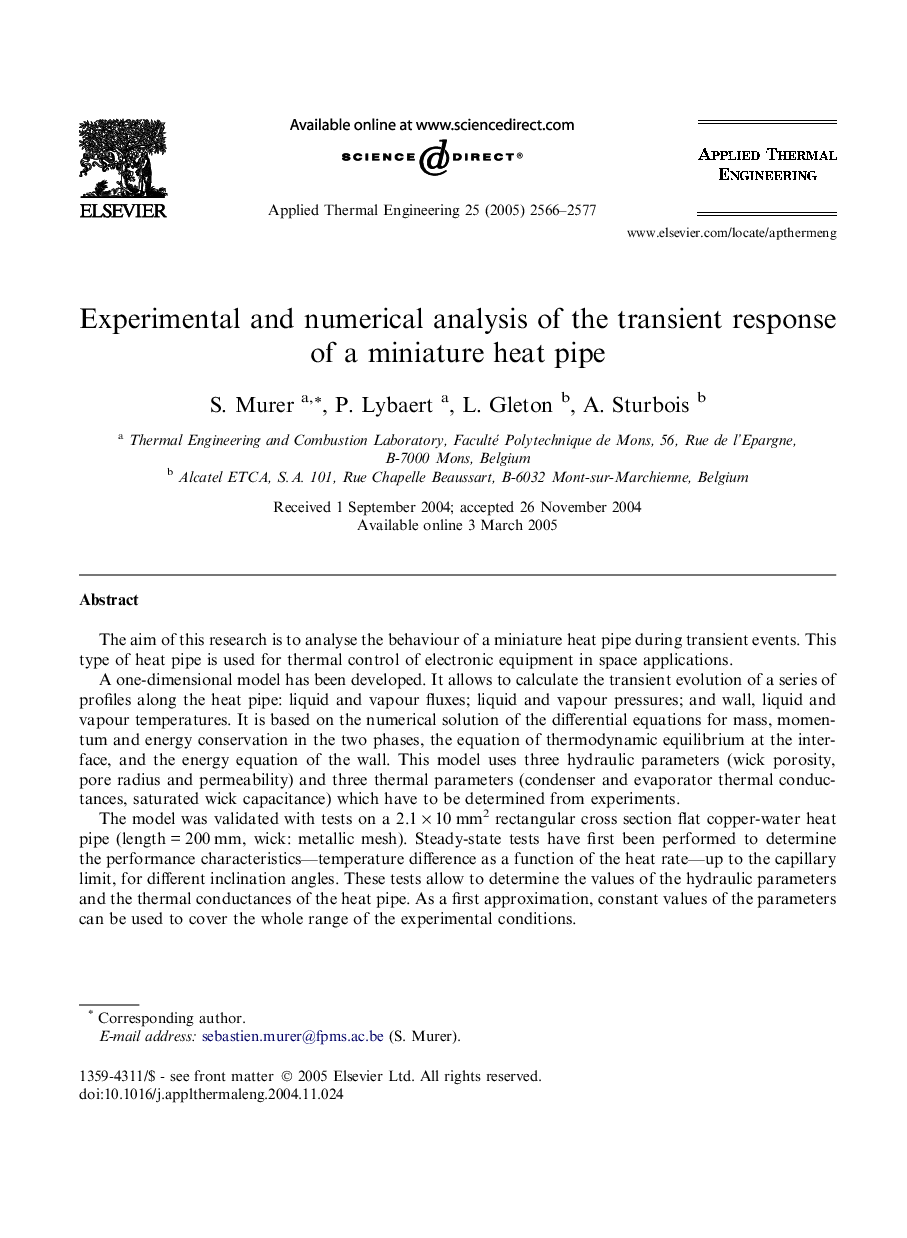| Article ID | Journal | Published Year | Pages | File Type |
|---|---|---|---|---|
| 649481 | Applied Thermal Engineering | 2005 | 12 Pages |
The aim of this research is to analyse the behaviour of a miniature heat pipe during transient events. This type of heat pipe is used for thermal control of electronic equipment in space applications.A one-dimensional model has been developed. It allows to calculate the transient evolution of a series of profiles along the heat pipe: liquid and vapour fluxes; liquid and vapour pressures; and wall, liquid and vapour temperatures. It is based on the numerical solution of the differential equations for mass, momentum and energy conservation in the two phases, the equation of thermodynamic equilibrium at the interface, and the energy equation of the wall. This model uses three hydraulic parameters (wick porosity, pore radius and permeability) and three thermal parameters (condenser and evaporator thermal conductances, saturated wick capacitance) which have to be determined from experiments.The model was validated with tests on a 2.1 × 10 mm2 rectangular cross section flat copper-water heat pipe (length = 200 mm, wick: metallic mesh). Steady-state tests have first been performed to determine the performance characteristics—temperature difference as a function of the heat rate—up to the capillary limit, for different inclination angles. These tests allow to determine the values of the hydraulic parameters and the thermal conductances of the heat pipe. As a first approximation, constant values of the parameters can be used to cover the whole range of the experimental conditions.The transient behaviour has then been investigated, resulting from a step variation of the evaporator heat rate.
